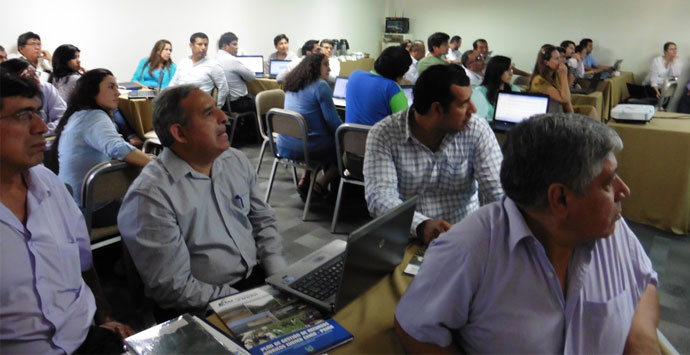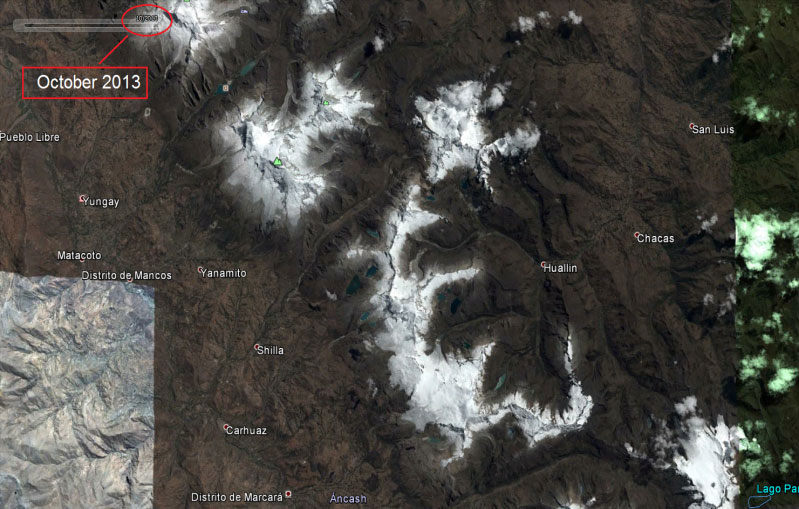Improving climate change resiliency in Latin America and the Caribbean
Chira-Piura Watershed in Piura, Peru. Piura is the most productive basin of coastal Peru, and is currently undergoing fast economic growth in multiple sectors.
A few months ago, I was fortunate enough to participate in the vulnerability training workshop as part of AECOM’s Partnering for Adaptation and Resilience – Agua (PARA-Agua), or “For Water,” project. PARA-Agua is an initiative that collaborates with scientists, decision-makers and communities across Latin America and the Caribbean to strengthen resilience to climate change through a better understanding of climate impacts on key water resources.
 Chira-Piura water managers and decision-makers participating at the vulnerability workshop in Piura, Peru.
Chira-Piura water managers and decision-makers participating at the vulnerability workshop in Piura, Peru.
The workshop was held for key actors in the Chira-Piura watershed situated in Piura, Peru. This experience allowed me to witness our project’s scientists and water engineers in action as they provided hands-on capacity building on how to generate a series of water management strategies by using the project’s Water Evaluation and Planning (WEAP) model. The WEAP model is a system that allows for an integrated assessment of climate change shifting hydrology and water management. Based on the results from a series of model runs under various climate change scenarios, participants were able to produce information on and evaluate the performance of various management strategies in the face of climate uncertainties. The results obtained from this exercise will also provide the basis for prioritization of investments in climate resilient infrastructure and non-structural adaptation interventions.
In Latin America, the need for sustainable development has become more important than ever. Climate change is negatively impacting water resources, agriculture and ecosystems. Increasing temperatures are altering hydrological cycles, and downstream communities are increasingly dependent on shrinking glaciers for potable water, agriculture and hydropower. But, there is no scientific consensus on the extent of the exact mechanisms for downstream impacts. To meet these challenges, our expected results include the following:
- Improved understanding of climate change impacts on watershed function, including on high-montane and páramos water supplies
- New climate adaptation tools, technologies and methodologies to be developed and used by policymakers and local communities
- New networks and mechanisms for data sharing between researchers, policymakers, and watershed stakeholders on climate change adaptation
- Increased participation by local communities, including women and disadvantaged populations, in developing climate change adaptation and watershed management solutions
- Increased investment in climate resilient infrastructure and non-structural adaptation interventions in target watersheds
- Establishment of legacy organizations to continue project activities

 Glacial retreat in Ancash, Peru. (Top: 1969; Bottom: 2013).
Glacial retreat in Ancash, Peru. (Top: 1969; Bottom: 2013).
During its first year, the PARA-Agua project initiated work in selected watersheds in Peru and Colombia, and has plans to expand to other countries in Latin America. The project is gaining significant momentum and, as a result, was featured in an event at the United Nations Framework Convention on Climate Change’s 20th session of the Conference of the Parties held in Lima, Peru. The PARA-Agua project clearly highlights AECOM’s commitment to sustainability around the world — and as a native Peruvian, being part of the AECOM community supporting this initiative has been a very rewarding experience thus far.
 Kena Vasquez (Kena.Vasquez@aecom.com) is a project manager in AECOM’s international development business managing climate change, energy, and infrastructure projects financed by the United States Agency for International Development.
Kena Vasquez (Kena.Vasquez@aecom.com) is a project manager in AECOM’s international development business managing climate change, energy, and infrastructure projects financed by the United States Agency for International Development.







